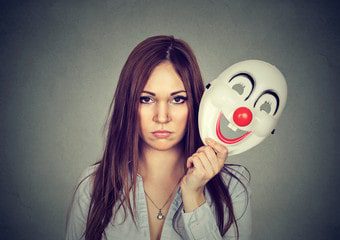If you’re bored with your current coffee choice, there are plenty of alternatives that can reignite your love for this great beverage. When selecting a new coffee bean to try, however, it’s very easy to get confused by all the different variations on offer, and you might not understand all of the different descriptors of flavor profiles and strengths. To help you with this process, we’ve compiled a number of tips that should hopefully improve your understanding of the world of coffee and allow you to make a more educated decision for your next coffee to try.
Decide On Your Brewing Method
First things first, you should figure out which brewing method you’re going to be using. All coffee is going to taste differently based on how they are brewed, as brewing times will change the strength of the coffee. Certain types of coffee are going to taste better with certain brewing methods and so you should consider whether you’ll be using a French press, a drip coffee machine, or even a barista coffee machine should you be looking to create some more advanced drinks like lattes and cappuccinos.
Of course, generally speaking, most coffee will work well with whichever method, as long as it’s good quality, so don’t worry that you can’t use the coffee you already own if you’re going to try using a French press. However, your French press is going to create a much stronger and fuller taste compared to the drip method. If you’re using a dark roast, for example, you should be prepared for a much more powerful flavor compared to other brewing methods, which may be overwhelming for some.
Understand The Different Coffee Types
There is a wide range of different coffees available to you, including the type of bean cultivar. Not only that, but each cultivar has a variety of subspecies under them which have slightly different flavor profiles from each other. Some may have a nutty taste, some might be more chocolatey, and some can even taste slightly spicy, too. Not only will these things impact the taste, but the way they have been prepared will, too. How they were roasted, the level of grind they were subjected to, the types of additives in the coffee, and the level of caffeine all impact the overall taste of the coffee itself. It’s worth doing your research into these different things to ensure you find a coffee that is right for you.
Think About The Type Of Roast
One of the more common preparation methods that are going to impact the taste of the coffee is how producers have roasted the beans. After being picked, coffee beans will be removed from the fruit they grow inside and are then dried and roasted to bring out the natural flavors that we are accustomed to. Coffee beans generally start off green, and when they are roasted between 365 and 485°F, they turn brown, looking like the coffee beans we see on supermarket shelves.
The longer coffee beans are left on the roasting shelf, the darker they become, as you’d likely expect. This gives the beans a richer, fuller taste, but this can be too much for certain coffee drinkers. The decision between light roast vs. dark roast is down to personal preference, however. If you find darker roasts to be too bitter or strong, then a lighter option might be best. Of course, there are also medium roasts that provide more of a kick than a light roast but with a milder taste than a darker roast.
Decide How Much Caffeine You Want
Different coffee beans, particularly the different cultivars, are going to provide you with different levels of caffeine. You’ll also find wide different varieties of coffee, but the four major categories are arabica, robusta, excelsa, and liberica. Excelsa beans naturally have a lower caffeine content than the others, with an average of 1g of caffeine per 100g of coffee. This then increases with the liberica at 1.23g, the arabica at 1.61g, and then the robusta with more than double the caffeine content than the excelsa, at 2.26g. Not only does the type of bean impact caffeine content, but the roast also impacts this, too. The darker the roast, the more caffeine will actually be lost in the process. So a lighter roast of a robusta bean is naturally going to be very high in caffeine, and a darker excelsa will generally have the lowest caffeine content.
Which Country Grows The Best Coffee?
Most of the time, the first thing you’ll see on a bag of whole or ground coffee beans is the country of origin. Kenya, Columbia, Sumatra; wherever the beans are from, there is a chance that the taste is going to differ. It’s not really possible to say which country grows the best coffee, however, as this is going to come down to personal preference. Certain countries, however, especially those in South America, produce very high-quality beans due to the new growing methods they employ. Shade-grown coffee is said to actually produce higher quality beans than usual, and it’s also a much more sustainable growing method. That means you can feel more confident that you aren’t supporting methods that harm the environment and contribute to things like deforestation and climate change.






